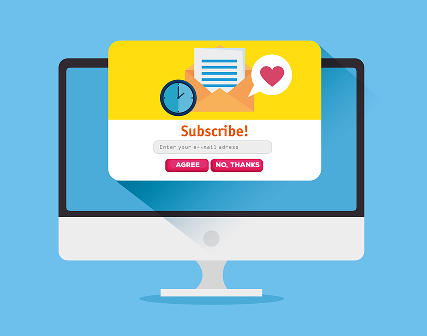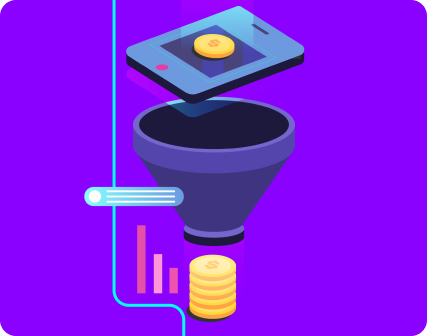UX and product design specialists: role breakdown
What is product design, and why is it crucial for businesses to find a skilled product designer? To avoid ambiguity, in this article, we outline the definition and role of product design in creating a successful business.
Product designer: definition, the scope of responsibilities, and main objectives
People say that product design is a new term, but we think it's better to say that it's an old concept with a new interpretation.
Previously, we were mainly concerned with designing material objects, but the digital age has broadened the concept of 'product design'. As a result, the web design profession and its main responsibilities are often misunderstood.
A product designer is a specialist who mediates between a company and its target audience. The main goal of people at this position is to develop a successful product prototype, taking into account many factors, including:
- Business needs;
- Features of a specific niche;
- Marketing strategy;
- User behavior patterns;
- Technological capabilities;
- Aesthetics and branding;
- Accessibility and inclusivity;
- Market and competitor analysis;
- Iterative design process;
- Current industry trends.
Typically, a product designer is responsible for all project development processes. This person ensures that the final product is cost-effective, functional, and that stakeholders are satisfied with the project results.
Product design and UX design pros: clarification and difference
Many people mistakenly confuse product designers with UX specialists, failing to see the difference between these positions. And that’s a huge misconception.
Well, both specialists apply similar client-oriented approaches, programming and analytical tools. But the difference is not what, but when they do it.
Product design is a comprehensive concept that includes all the processes required to develop a successful product. At the same time, UX design focuses on finding solutions to a specific problem a user may face when interacting with a product. Therefore, UX designers mostly work on web design development, focusing on the interface of an application or website.
At the same time, the work of a product designer goes far beyond UX design. These people deal not only with the interface, but also with all product design and development processes, which usually include:
- Research and analysis;
- Development of ideas and concepts;
- Creating a user-friendly interface (UX);
- Development of user interface (UI) design;
- Prototyping and testing;
- Collaboration and iteration;
- Implementation and realization;
- Evaluation and continuous improvement.

Product designers are usually people who have previously been involved in UX design and have acquired the necessary experience, knowledge, and skills to develop a project as a whole. In other words, not all UX specialists are product designers, but almost all product designers are UX specialists.
Product prototype and UX design: a perfect pairing
A product prototype and UX design are closely related concepts in the process of creating new products, apps, services, solutions and so on. A prototype is a preliminary product model that appears in the physical and/or online world, which helps to test and develop the final product.
On the other hand, UX design focuses on creating a user-friendly and intuitive experience and guides the prototyping process to ensure it meets user needs and expectations.
By integrating the product prototype with effective UX design, teams can easily discover drawbacks and issues within the design phase itself, providing a better user experience, and increasing the overall chances of that product.
Successful product designers characteristics: professional qualities and experience
A product design and development specialist will help you identify, research and justify your current business problems and find the best way to solve them to increase the conversion rate.
On the other hand, working with unprofessional product designers can lead to a waste of time, money and effort, as expectations are unlikely to match reality in the end. After all, if the end product prototype doesn't go in line with the company's and customer's needs, it is a failure.
The main task of a product designer is to create a product that focuses on combining the needs of business and its users. To achieve this, product designers need a number of specific skills and knowledge, some of which are discussed below:
Soft skills as a must-have component
This position requires strong soft skills, as a product designer usually works closely with other people.
As well as communicating with different teams and business representatives, product designers need to be able to clearly present their ideas at every stage of the workflow.
Specific knowledge required for the job
A professional product designer has basic skills in animation, prototyping, programming, UI and UX design for business. They know when to use complex animation and when a prototype is enough.
Technical skills and creativity
Product designers must be able to harmoniously combine technical knowledge with a creative approach to work. This profession requires the ability to combine a sense of style and spatial imagination with an understanding of the commercial specifics of the project. A product designer should know how to create a product that is both visually and technically advanced.
Specialized software and tools
Product designers use a range of software and tools to bring their ideas to life, including Adobe Illustrator, Sketch, Adobe XD, and Figma. They also develop customer journey maps, research user needs and create frameworks. Basic knowledge of programming languages is also a must.
Deep analysis and continuous improvement
Among other things, product designers provide a clear A/B testing strategy and draw up a product implementation plan. This specialist closely cooperates with developers and the marketing department throughout the entire process.
What's more, product designers usually take care of the product even after its release to check how it works and detect possible issues, improving the project until it satisfies the business requirements and customer needs.
UX vs. product design and development: drawing the line
A professional product design and development team can help you create a powerful basis for a successful business. The Turum-burum team, for example, can provide expert consultation on a range of product design issues. Having worked with a wide range of niches and technologies, we understand not only their capabilities, but more importantly, their limitations. This allows us to make your product as user-friendly as possible.
‘We believe that the word 'product' is much more important than 'design' in the product design term. This means that we are always focused on your success, not just on adding another beautiful case to our portfolio,’ says Dmytro Kukuruza, CEO of Turum-burum.
As mentioned above, a product designer not only has to develop the interface design, but also has to go a long way from the business concept to the creation of the final product. The web product design strategy is to work closely with developers, marketers, and contractors throughout the design process, including the following steps
- Discussing the product concept;
- Business analysis;
- Prototyping;
- UX design;
- Testing;
- Commercialization.
Process automation plays a significant role in the efficient functioning of a company. In this context, a CRM (Customer Relationship Management) system becomes an indispensable tool. Using a powerful CRM system such as KeyCRM allows you to automate customer relationship management processes, track sales, manage contact information and increase overall project efficiency.
FAQ
Question reference
Answer reference
More real-world Turum-burum cases?
Review our vast portfolio of cases in a variety of business fields to make sure of our expertise.
Go to Portfolio
















.png)


